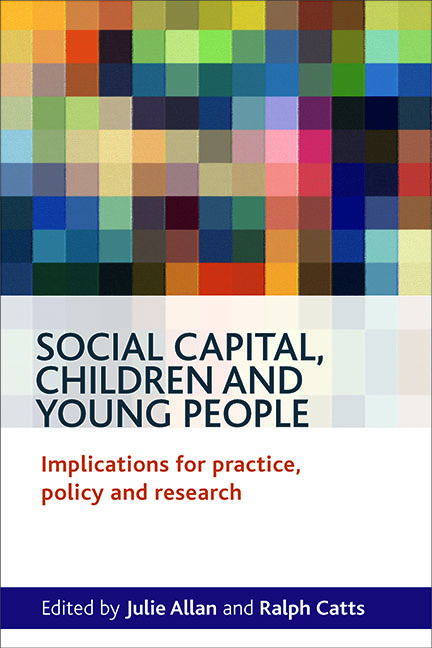six - Commentary: social capital and inclusion: implications for practice
Published online by Cambridge University Press: 01 September 2022
Summary
These four insightful analyses of evidence provided by young people and parents (Chapters Two–Five) suggest that, while the phrase ‘social capital’ is today not uncommon in Scottish education, there is a need to develop our critical understanding of this concept, theoretically and practically. Barry points out (in Chapter Four) that social capital is difficult to define in academic circles, let alone among children and young people, and the researchers have tried to explore both the ‘dark side’ of social capital (Field, 2003, p. 19) as well as its benefits.
These studies, explicitly and implicitly, raise a number of overlapping questions: To what extent do individuals own their social capital? To what extent is social capital bound to the context where it has been created; how transferable is it? Is social capital primarily an instrument for benefiting individuals or is it an indicator of social cohesion? Is it a means of asserting control through setting social norms? Is it a weak substitute for planned and resourced state provision? Is it a discourse used by policy makers to avoid responsibility for inequality by blaming those at risk of social exclusion for their lack of social capital?
In recent decades the phrase ‘social capital’ has been used with a range of interpretations, not always fully explicit, sometimes ill-defined or self-referential; some uses of the phrase are inconsistent with others; and it seems difficult to measure social capital, even when well-defined, in any meaningful way. Schuller et al (2000, p. 1) begin their analysis of the concept of social capital by suggesting that it ‘has an immediate intuitive appeal’ but quickly identify inherent problems. Stolle and Hooghe's (2004) review of competing claims about the decline of social capital leads one to conclude that a more clearly defined concept, with a stronger theoretical basis and one more open to analysis, would be less likely to lead to mutually conflicting research outcomes. The complexities inherent in measuring social capital are illuminated by Haezewindt's analysis (2003), whereby the extent of a group's social capital depends on the measures employed; by some measures, particular vulnerable groups (for example, lone parents) are, contrary to received wisdom, rich in social capital.
- Type
- Chapter
- Information
- Social Capital, Children and Young PeopleImplications for Practice, Policy and Research, pp. 99 - 112Publisher: Bristol University PressPrint publication year: 2012



